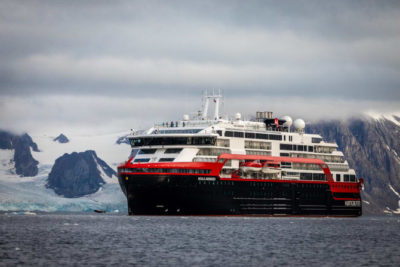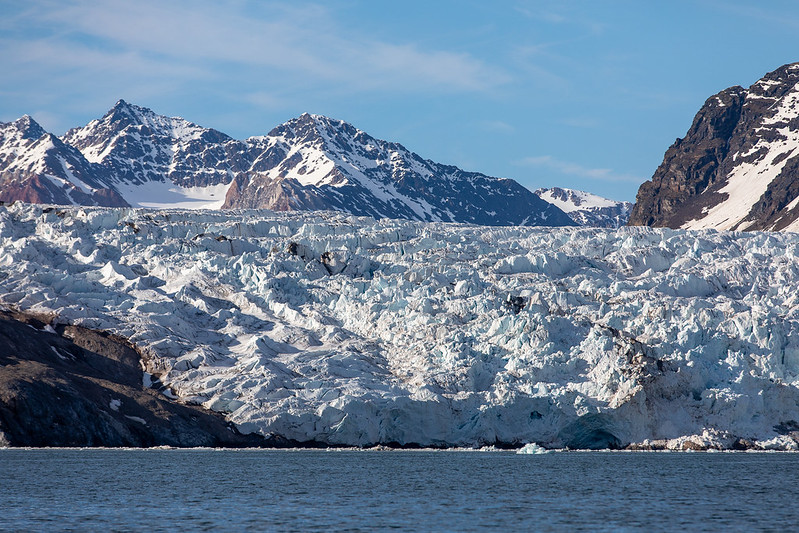Norway’s Arctic archipelago of Svalbard is in the midst of recording its mildest January in 90 years. Climate researchers think temperatures will keep on rising, so officials are trying once again to restrict tourism because of its contribution to climate change.

Climate researchers reported on Monday that January temperatures on Svalbard have risen nearly 14 degrees since the 1960s. Average temperatures in the years 1961-1990 were minus-15.3C. They rose to minus-10.9C from 1991 to 2020 on average during the first two weeks of January.
Over these past two weeks of the New Year, temperatures averaged just minus-1.7C, confirming researchers’ findings that temperatures are rising faster in the Arctic than anywhere else on the planet. “And we must expect that temperatures will rise even more,” researcher Jostein Mamen of Norway’s state Meteorological Institute told state broadcaster NRK. Last summer was also the warmest ever recorded, with average temperatures of 8C.
That’s bringing another attempted crackdown on tourism from the state agency in charge of environmental issues (Miljødirektoratet). Its legal and scientific experts want to quickly and firmly reduce the tourism boom of recent years that’s brought more flights, more cruiseships, lots more people and all the carbon emissions that entails to Svalbard.
The directorate is proposing once again, for example, that cruiseships sailing to Svalbard should have no more than 200 passengers on board. Disembarkation points should also be limited, they claim, and fewer ships should be allowed to sail in protected wilderness areas.

It’s the carbon emissions from the ships and too much human presence on sensitive land that’s disturbing wildlife and harming nature. It’s become common for cruiseships to anchor in various arms of the fjords around Svalbard, and keep their engines running while passengers are shuttled towards land in smaller boats that also burn fossil fuel.
Norwegian Broadcasting (NRK) reported that tourists disembarked at more than 200 scenic spots around Svalbard in 2019 alone (the year before tourism was disrupted by the Corona crisis). State environmental regulators now want to allow disembarkations at just 43 places to be selected as being most suited to tolerate human activity.
There’s simply too much of it now in the pristine Arctic, and officials are calling for much stricter regulation. They also want tour operators to keep tourists at least 500 meters away from any polar bears. If a bear comes any closer, it can be life-threatening for both the animal and the tourists.
Officials at the environmental directorate also want a total ban on flying drones in protected areas, especially around bird’s nesting areas. Drones have become increasingly popular to take photos and video, but they can disturb wildlife and litter the scenery if they malfunction.
The directorate also wants the government to forbid all motorized transport on the ice after March 1 in several fjords.

Legal experts stress that laws applying to Svalbard already declare that the islands’ nature must remain untouched. Several areas, however, are showing signs of all the increased activity by tourists walking around. “In some of the most popular places to go ashore, the signs of human activity are very visible,” Trond Flydal, leader of the legal section for wilderness at the directorate, told NRK. “The wear and tear on the land is only getting worse. Some species are struggling because of climate change, and tourism puts them more at risk.”
All acknowledge that Svalbard is a popular tourist destination, with many wanting to experience its scenery and wildlife, “but that also gives us many challenges that we’re now trying to address,” Flydal said. It’s the boom in cruiseships that worries them the most: In 1996 officials registered 29,600 disembarkations on Svalbard. In 2019, the number swelled to 108,000.
Tourism industry officials are predictably critical, and ready to fight more regulation. “The proposals will hit our portion of the business especially hard,” said Frigg Jørgensen of an organization representing so-called “expedition cruises” in the Arctic. The local tourism promotion organization “Visit Svalbard” wants the proposals be withdrawn, claiming they would all but “close the coastal areas of Svalbard.”
The cruiseline Hurtigruten Svalbard called the proposals “a catastrophe,” claiming that limiting disembarkation points would greatly increase tourists’ “footprints” at the 43 spots allowed. Flydal responded that “the challenges polar bears are facing because of climate change, for example, must weigh most heavily.”
Environmental organizations were positive, with Norway’s chapter of Friends of the Earth (Naturvernforbund) welcoming stricter rules. “This is extremely important,” said the leader of the organization in Troms, Anne-Lise Mortensen. “Svalbard has sensitive Arctic nature that we’re legally bound to take care of.”
NewsinEnglish.no/Nina Berglund

